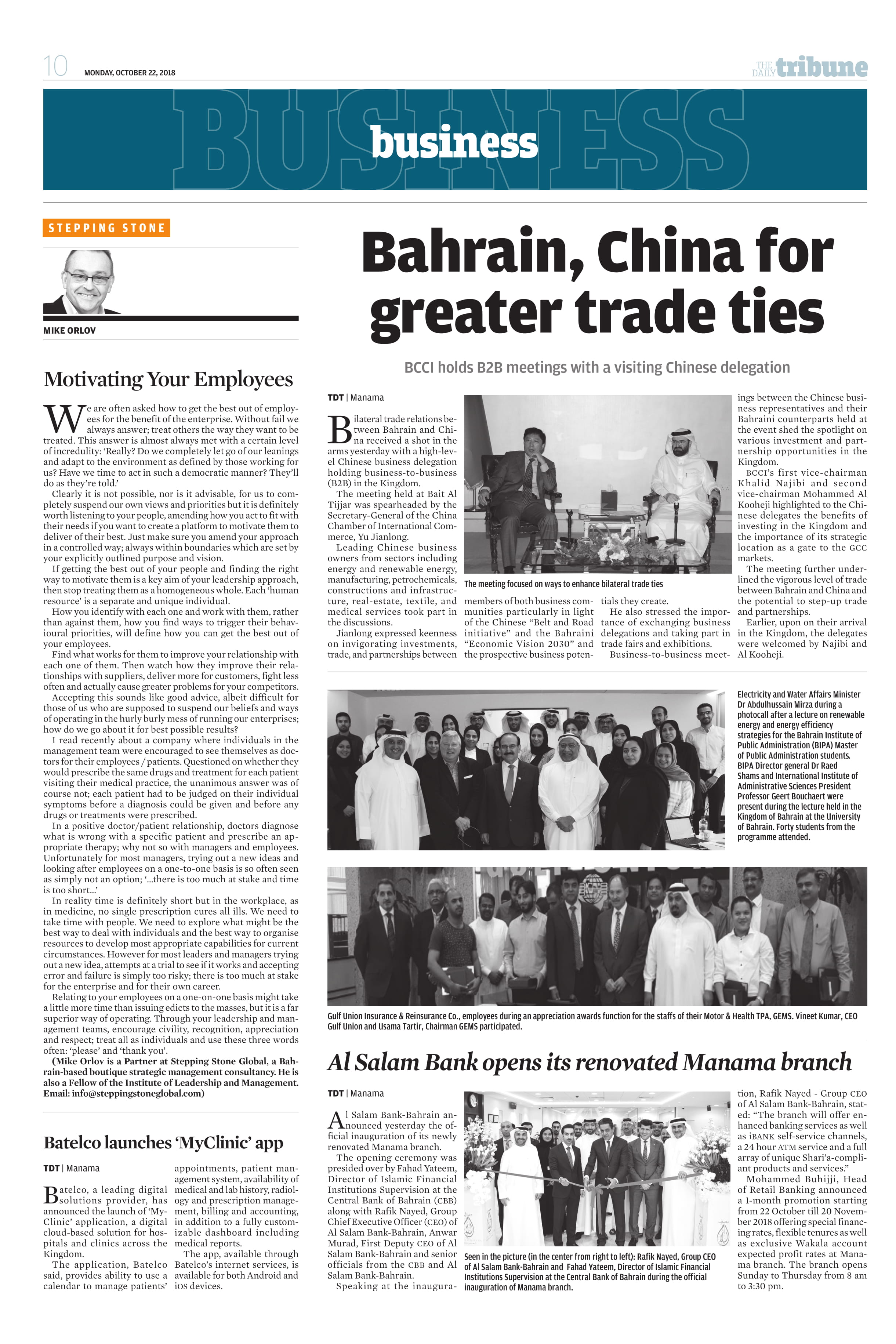Motivating Your Employees
We are often asked how to get the best out of employees for the benefit of the enterprise. Without fail we always answer; treat others the way they want to be treated. This answer is almost always met with a certain level of incredulity: ‘Really? Do we completely let go of our leanings and adapt to the environment as defined by those working for us? Have we time to act in such a democratic manner? They’ll do as they’re told.’
Clearly it is not possible, nor is it advisable, for us to completely suspend our own views and priorities but it is definitely worth listening to your people, amending how you act to fit with their needs if you want to create a platform to motivate them to deliver of their best. Just make sure you amend your approach in a controlled way; always within boundaries which are set by your explicitly outlined purpose and vision.
If getting the best out of your people and finding the right way to motivate them is a key aim of your leadership approach, then stop treating them as a homogeneous whole. Each ‘human resource’ is a separate and unique individual.
How you identify with each one and work with them, rather than against them, how you find ways to trigger their behavioural priorities, will define how you can get the best out of your employees.
Find what works for them to improve your relationship with each one of them. Then watch how they improve their relationships with suppliers, deliver more for customers, fight less often and actually cause greater problems for your competitors.
Accepting this sounds like good advice, albeit difficult for those of us who are supposed to suspend our beliefs and ways of operating in the hurly burly mess of running our enterprises; how do we go about it for best possible results?
I read recently about a company where individuals in the management team were encouraged to see themselves as doctors for their employees / patients. Questioned on whether they would prescribe the same drugs and treatment for each patient visiting their medical practice, the unanimous answer was of course not; each patient had to be judged on their individual symptoms before a diagnosis could be given and before any drugs or treatments were prescribed.
In a positive doctor/patient relationship, doctors diagnose what is wrong with a specific patient and prescribe an appropriate therapy; why not so with managers and employees. Unfortunately for most managers, trying out a new ideas and looking after employees on a one-to-one basis is so often seen as simply not an option; ‘…there is too much at stake and time is too short…’
In reality time is definitely short but in the workplace, as in medicine, no single prescription cures all ills. We need to take time with people. We need to explore what might be the best way to deal with individuals and the best way to organise resources to develop most appropriate capabilities for current circumstances. However for most leaders and managers trying out a new idea, attempts at a trial to see if it works and accepting error and failure is simply too risky; there is too much at stake for the enterprise and for their own career.
Relating to your employees on a one-on-one basis might take a little more time than issuing edicts to the masses, but it is a far superior way of operating. Through your leadership and management teams, encourage civility, recognition, appreciation and respect; treat all as individuals and use these three words often: ‘please’ and ‘thank you’.

